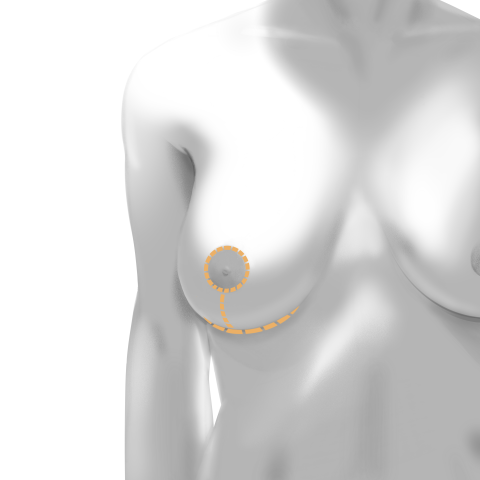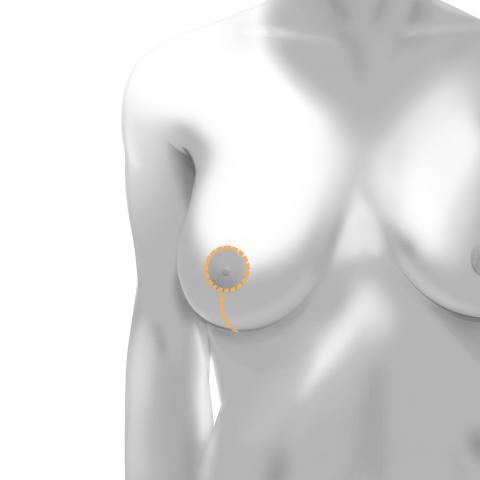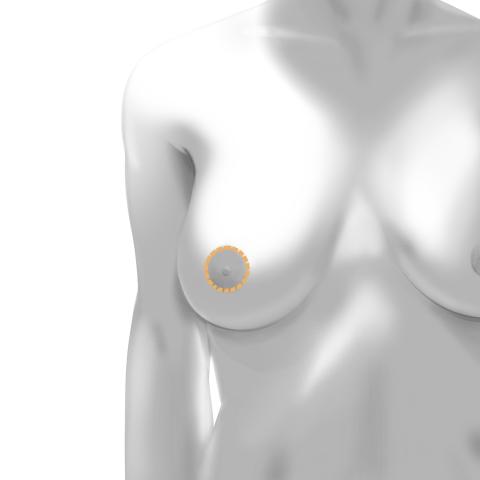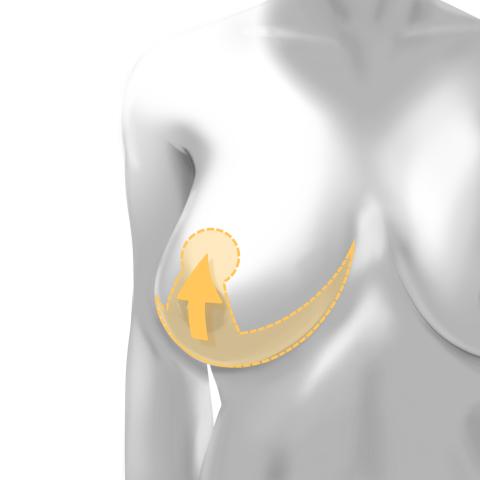What type of breast reduction incisions are there?
There are several different breast incision patterns and techniques. Your aesthetic plastic surgeon will select a technique based on your breast size and shape, areola size and position, degree of breast sagging, skin quality, skin elasticity and how much extra skin you have.
There are three common types of incisions:
- Around the areolas
- Extending downward from the areolas to the breast creases
- Horizontally along the breast creases
The "Anchor" Incision
An “anchor” incision, the most common technique, and involves three distinct cuts. Your surgeon makes the first incision around the perimeter of the areola, the second vertically down from the areola to the breast crease and the third horizontally along the breast crease. If you desire a significant reduction or have a severe degree of sagging, your surgeon will likely recommend this approach. This technique can help you achieve the most dramatic results, but also leaves the most scarring.

The "Keyhole" Incision (also known as a "lollipop" lift)
A “keyhole” incision involves two distinct cuts. Your surgeon makes the first incision around the perimeter of the areola and the second vertically down from the areola to the breast crease. If you desire a moderate reduction and have a moderate degree of sagging, your surgeon may recommend this approach. This technique produces moderate scarring.

The "Donut" Incision (also known as the "periareolar incision")
A “donut” incision involves one cut made solely around the border of the areolas. If you only desire a minor reduction, your surgeon may recommend this approach. This technique produces the least amount of scarring.

If your breasts are extremely large, your surgeon may have to completely detach the nipples and areolas then shift them to a higher level. This technique is rare, and in such cases, you will lose nipple sensation and may not be able to breastfeed.

Will I have any scars after my breast reduction?
Breast reduction scars vary according to the type of incision your aesthetic surgeon makes (as outlined above). Your surgeon can conceal some scars in natural breast contours, but others will be visible on the breast surface.
Although incision lines are permanent, in most cases they will fade and significantly improve over time. Aesthetic plastic surgeons make every effort to place incisions in hidden areas and minimize them, with the goal of achieving the desired results with the shortest possible scar. Special tissue handling and suture techniques further minimize scars.
Your incision healing will depend on the surgical technique, the steps you take to prevent infection (nutrition, not smoking, hydrating), and any underlying medical conditions or genetic tendencies.



